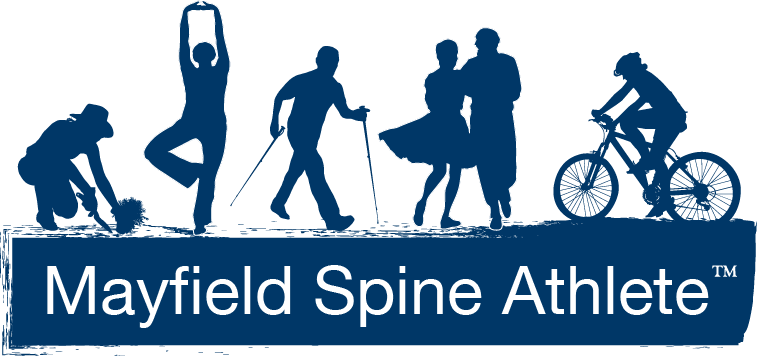Spine Athlete ::: Mary Chris"s story
Herniated disc
Diagnosis: Scoliosis and lumbar instability at L2-3
Treatment: Minimally invasive XLIF® fusion at L2-3, May 2012
Neurosurgeon: William Tobler, MD
Initial injury: I’ve always been on the go. You name the sport, and I’ve probably been active in it. I’ve loved swimming, running, diving, tap dancing, and playing racquetball, softball and golf. I was still running 10-kilometer races in my 40s, and I was able to do a forward one-and-a-half flip off the 3-meter diving board until a few years ago.
Turning point: Unfortunately, my family has a history of back problems, and when I complained of hip pain to my orthopedist a few years ago, he told me the problem was in my spine, not my hip. I had my first back procedure, a discectomy, in December of 2010. I had a little scoliosis and was leaning a little at that time, and Dr. Tobler told me I’d be back for more surgery later. I was determined to avoid additional surgery for as long as I could, but I eventually got to the point where I looked really crooked when I was standing. I was like the Leaning Tower of Pisa. There were days that I would literally have to stand up because the thought of sitting down again was so painful. But I had to go to work. Getting in and out of the car was terribly difficult. Often I just didn’t go to see people.
Treatment: In 2012 I had spinal fusion with rods and pins. The XLIF® was a new procedure, and it meant they would approach my back through my side. They made a few small incisions, removed my disc and then inserted a cage packed with porous bone into the empty disc space. They secured everything with pedicle screws and rods (see Fig. 1). I was in a lot of pain the first week, taking my meds every four hours. But six weeks later I was seen dancing up a storm at a family wedding.
Being a Spine Athlete: I firmly believe that you have to do your rehab. You have to do this. If you don’t follow through with rehab and lifelong back care, why are you having back surgery? It would be like going to school and not doing any homework. My running days are over. No more pounding the pavement. And I’m very cautious about twisting and lifting. The most important thing is building up your core with strengthening exercises. I also walk two to three miles at least four times a week. Dr. Tobler did one level but said I might have problems in the future at adjacent levels. That could potentially limit my mobility and mean no more golf. So I am going by the book and taking good care of my spine.
Spine Athlete Story Disclaimer -"Mary Chris"s Story" is about one patient"s health-care experience. Please bear in mind that because every patient is unique, individual patients may respond to treatment in different ways. Results are influenced by many factors and may vary from patient to patient.

"There were days that I would literally have to stand up because the thought of sitting down again was so painful. But I had to go to work. Getting in and out of the car was terribly difficult. Often I just didn’t go to see people."

Figure 1

If you are a current or former Mayfield Spine Athlete yourself, and if you"d like to share your story, please contact us.
